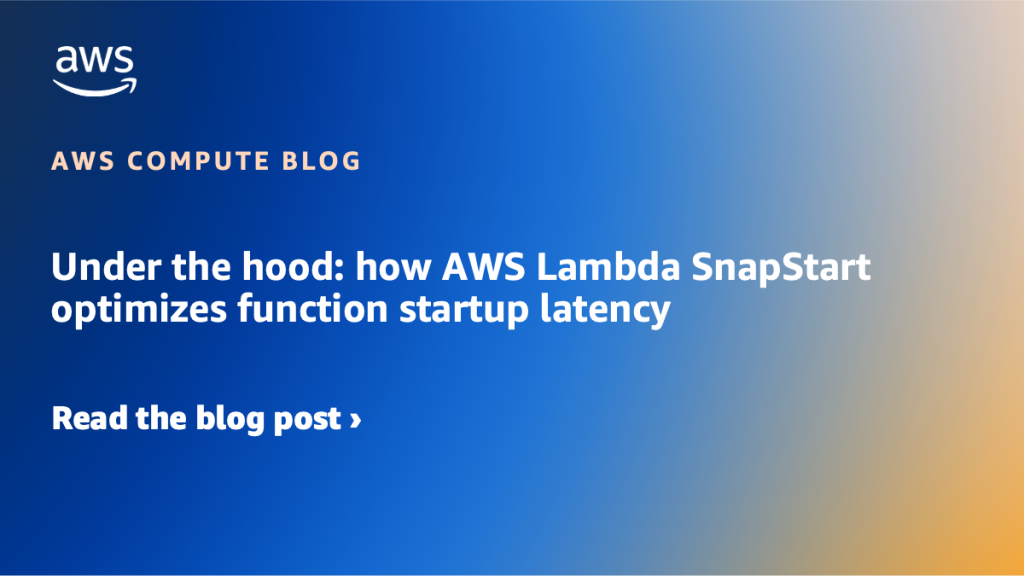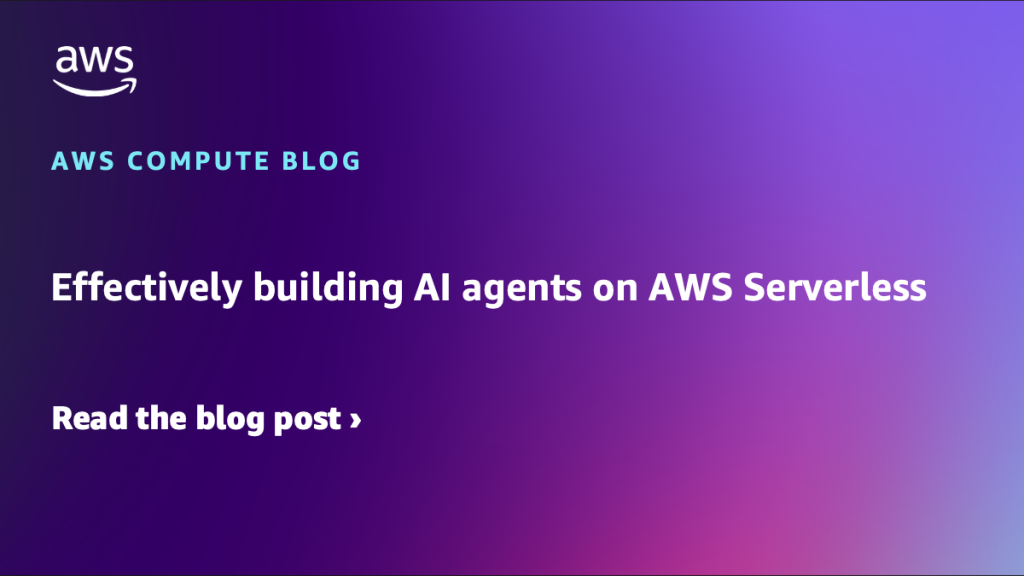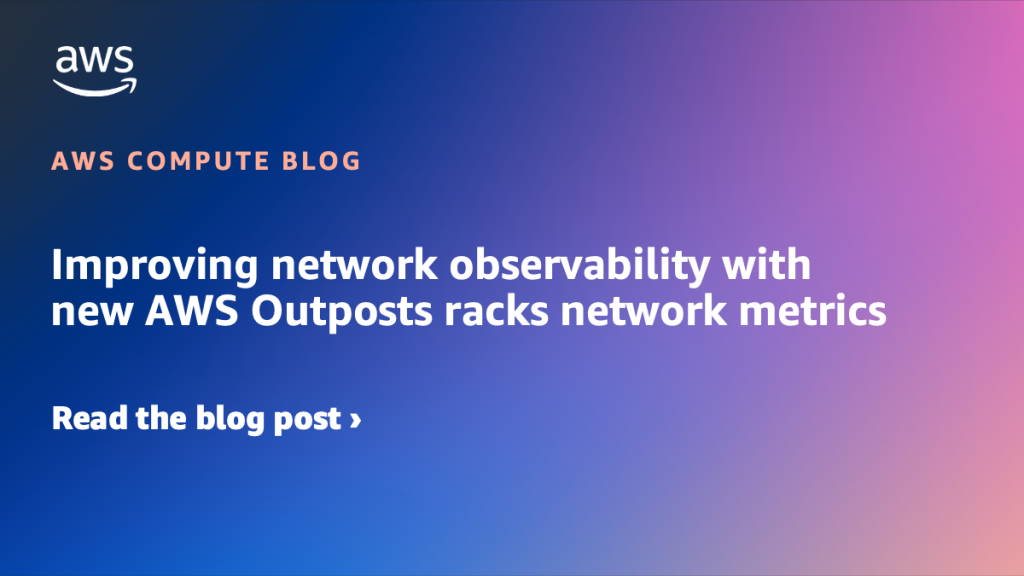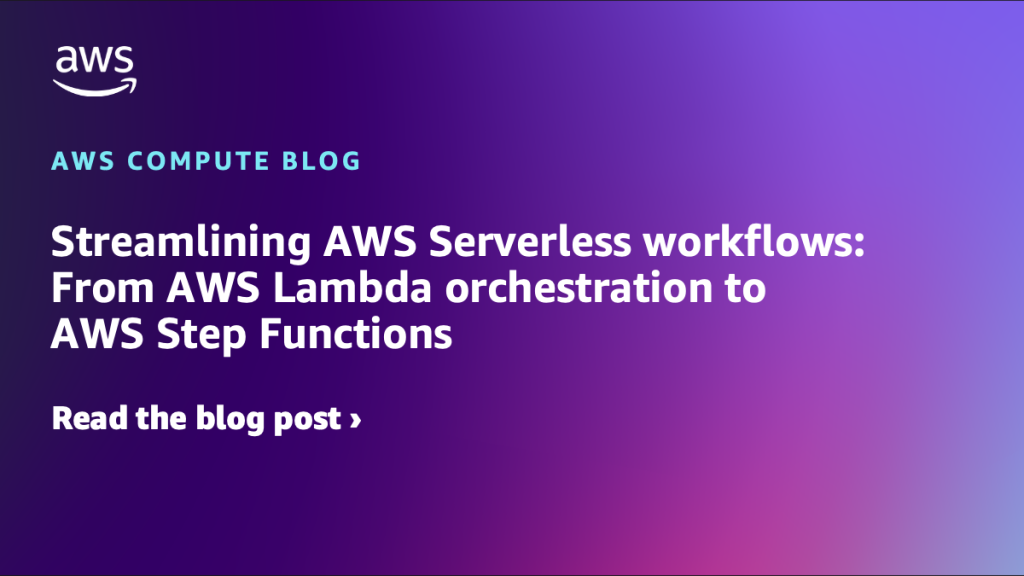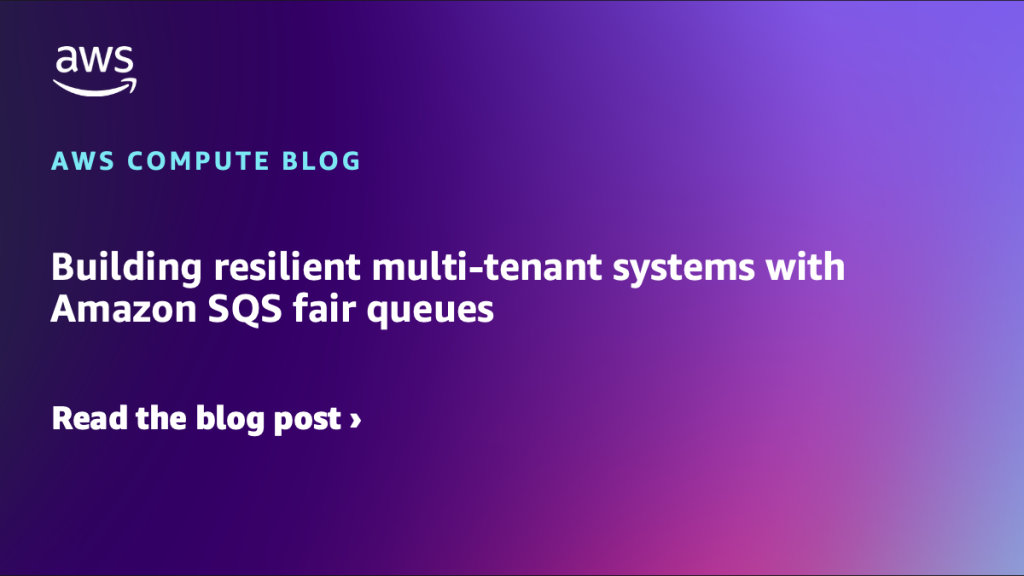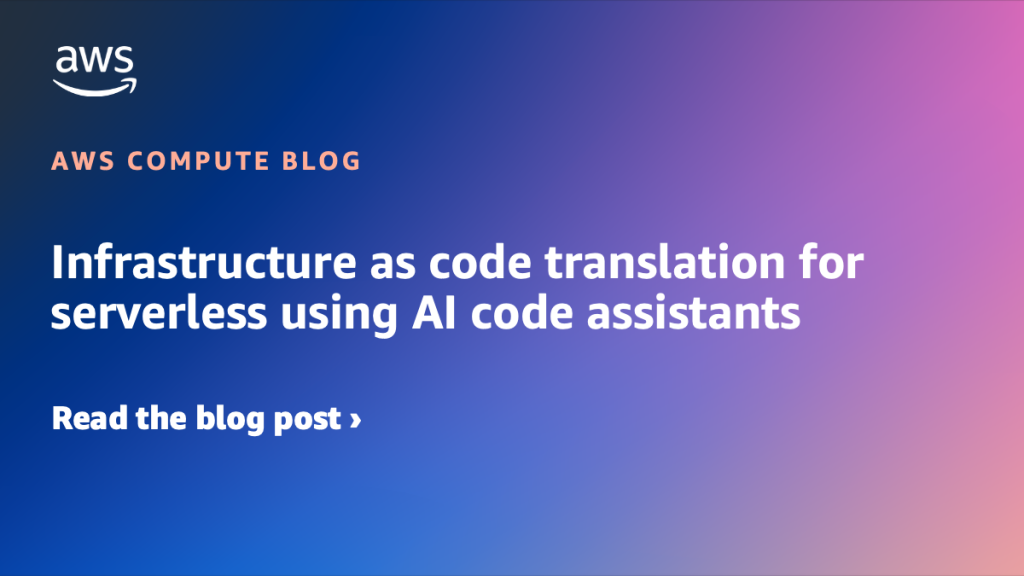AWS Compute Blog
Under the hood: how AWS Lambda SnapStart optimizes function startup latency
AWS Lambda cold start latency can impact performance for latency-sensitive applications, with function initialization being the primary contributor to startup delays. Lambda SnapStart addresses this challenge by reducing cold start times from several seconds to sub-second performance for Java, Python, and .NET runtimes with minimal code changes. This post explains SnapStart’s underlying mechanisms and provides performance optimization recommendations for applications using this feature.
Effectively building AI agents on AWS Serverless
Imagine an AI assistant that doesn’t just respond to prompts – it reasons through goals, acts, and integrates with real-time systems. This is the promise of agentic AI. According to Gartner, by 2028 over 33% of enterprise applications will embed agentic capabilities – up from less than 1% today. While early generative AI efforts focused […]
Understanding and Remediating Cold Starts: An AWS Lambda Perspective
Cold starts are an important consideration when building applications on serverless platforms. In AWS Lambda, they refer to the initialization steps that occur when a function is invoked after a period of inactivity or during rapid scale-up. While typically brief and infrequent, cold starts can introduce additional latency, making it essential to understand them, especially […]
Improving network observability with new AWS Outposts racks network metrics
With AWS Outposts racks, you can extend AWS infrastructure, services, APIs, and tools to on-premises locations. Providing performant, stable, and resilient network connections to both the parent AWS Region as well as the local network is essential to maintaining uninterrupted service. The release of two new Amazon CloudWatch metrics, VifConnectionStatus and VifBgpSessionState, gives you greater visibility into the operational status of the Outpost network connections. In this post, we discuss how to use these metrics to quickly identify network disruptions, using additional data points that can help reduce time to resolution.
Introducing v2 of Powertools for AWS Lambda (Java)
Modern applications increasingly rely on Serverless technologies such as Amazon Web Services (AWS) Lambda to provide scalability, cost efficiency, and agility. The Serverless Applications Lens for the AWS Well-Architected Framework focuses on how to design, deploy, and architect your Serverless applications to overcome some of these challenges. Powertools for AWS Lambda is a developer toolkit that […]
Streamlining AWS Serverless workflows: From AWS Lambda orchestration to AWS Step Functions
This blog post discusses the AWS Lambda as orchestrator anti-pattern and how to redesign serverless solutions using AWS Step Functions with native integrations.
Implementing message prioritization with quorum queues on Amazon MQ for RabbitMQ
Quorum queues are now available on Amazon MQ for RabbitMQ from version 3.13. Quorum queues are a replicated First-In, First-Out (FIFO) queue type that uses the Raft consensus algorithm to maintain data consistency. Quorum queues on RabbitMQ version 3.13 lack one key feature compared to classic queues: message prioritization. However, RabbitMQ version 4.0 introduced support […]
Building resilient multi-tenant systems with Amazon SQS fair queues
Today, AWS introduced Amazon Simple Queue Service (Amazon SQS) fair queues, a new feature that mitigates noisy neighbor impact in multi-tenant systems. With fair queues, your applications become more resilient and easier to operate, reducing operational overhead while improving quality of service for your customers. In distributed architectures, message queues have become the backbone of […]
Deploying external boot volumes with AWS Outposts
September 2025: AWS Outposts is now integrated with Dell PowerStore and HPE Alletra Storage MP B10000. The guidance in this blog post also applies to these storage systems. Read Announcing AWS Outposts third-party storage integration with Dell and HPE for more details. Building on our previous announcement, AWS Outposts third-party storage integration for data volumes, […]
Infrastructure as code translation for serverless using AI code assistants
Serverless applications commonly use infrastructure as code (IaC) frameworks to define and manage their cloud resources. Teams choose different IaC tools based on their skills, existing tooling, or compliance needs. As applications grow, the need to shift between IaC formats may arise to adopt new features or align with evolving standards. Developers are rapidly adopting AI-powered […]
